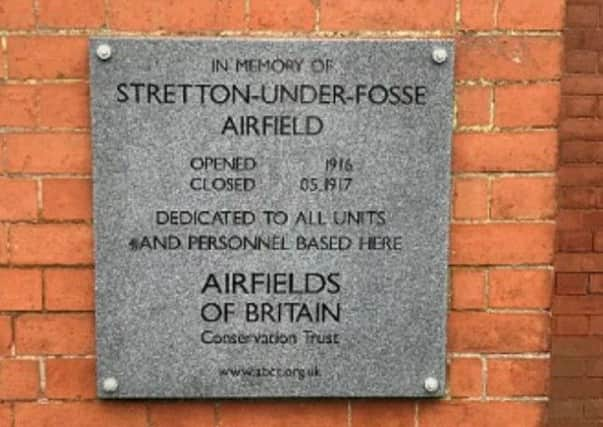LOOKING BACK extra - December 20, 2018 edition


Continuing our WWI theme of the past few weeks, thank you to David Collins, who has written this piece about Stretton under Fosse airfield.
This plaque on the village hall from the Airfields of Britain Conservation Trust commemorates Stretton under Fosse Airfield, a 2nd Class Night Landing Ground operational from October 1916 until May 1917 for the use of No. 38 Home Defence Squadron of the Royal Flying Corps.
Advertisement
Hide AdAdvertisement
Hide AdIts precise location is uncertain, being little more than a grass field cleared of obstacles like hedges some 40 acres in extent and was either to the west of the Fosse Way (B4555) or between the Fosse Way and the Lutterworth Road (B4027), south of Ashton Lodge, Street Ashton.
2nd Class Landing Grounds allowed landings from most directions but surfaces were irregular in some places with obstacles on some approaches.
No. 38 Squadron was formed at Castle Bromwich in May 1916 but moved to Melton Mowbray. They initially attacked Zeppelin airships, with first bombs and Ranken darts and then exploding machine gun bullets and later German aircraft with machine guns.
The airfield was for use in an emergency, like engine failure, and lit by ground flares ignited by volunteers until the end of 1916 when detachments of the Royal Defence Corps took over using paraffin flares.
Advertisement
Hide AdAdvertisement
Hide AdEarly in 1916 a system using the National telephone service was introduced. On receipt of a warning of enemy airships/aircraft leaving Germany, messages were passed to Districts into which the country had been divided alerting them to a possible raid to enable Air Defence Squadron fighters to take off and climb to a height above that of the approaching enemy.